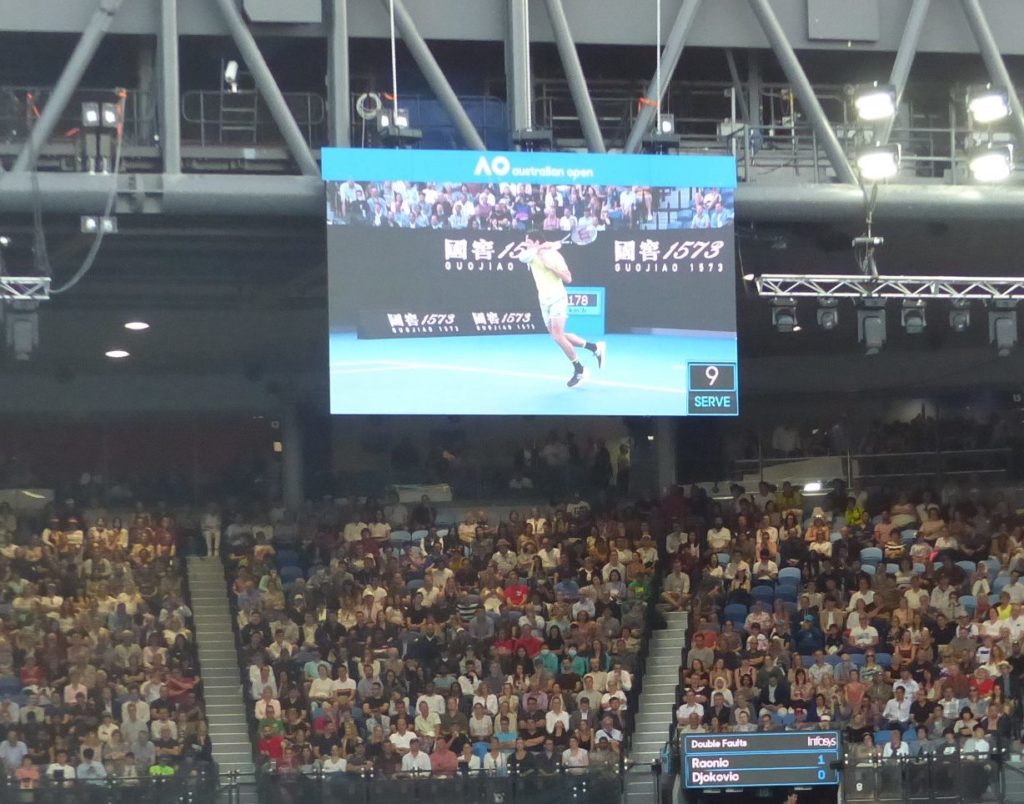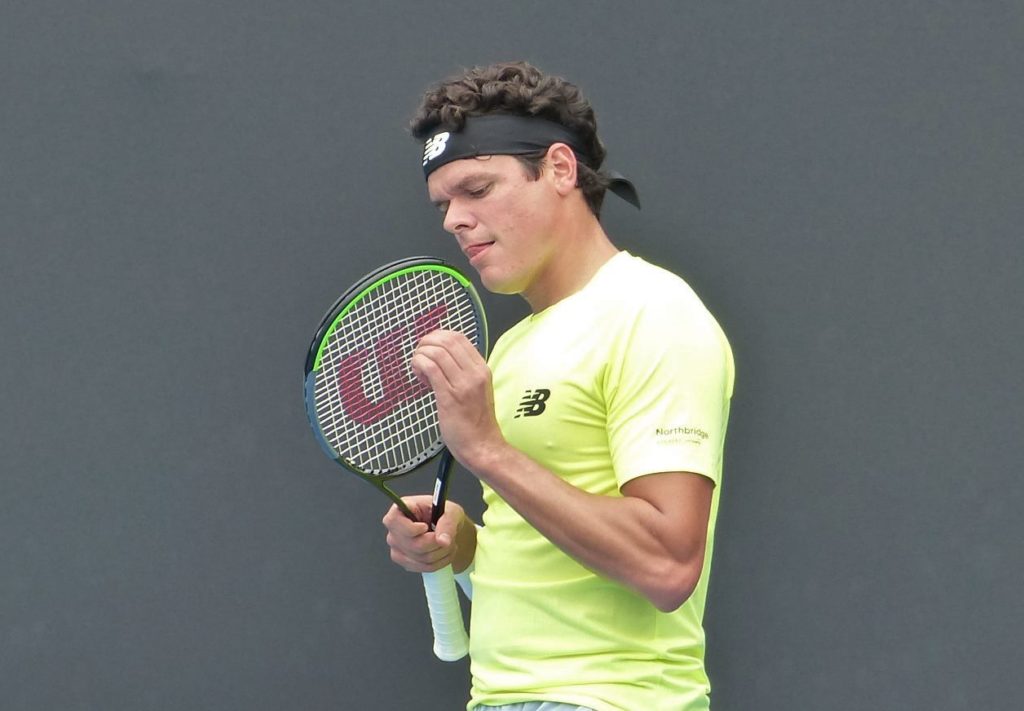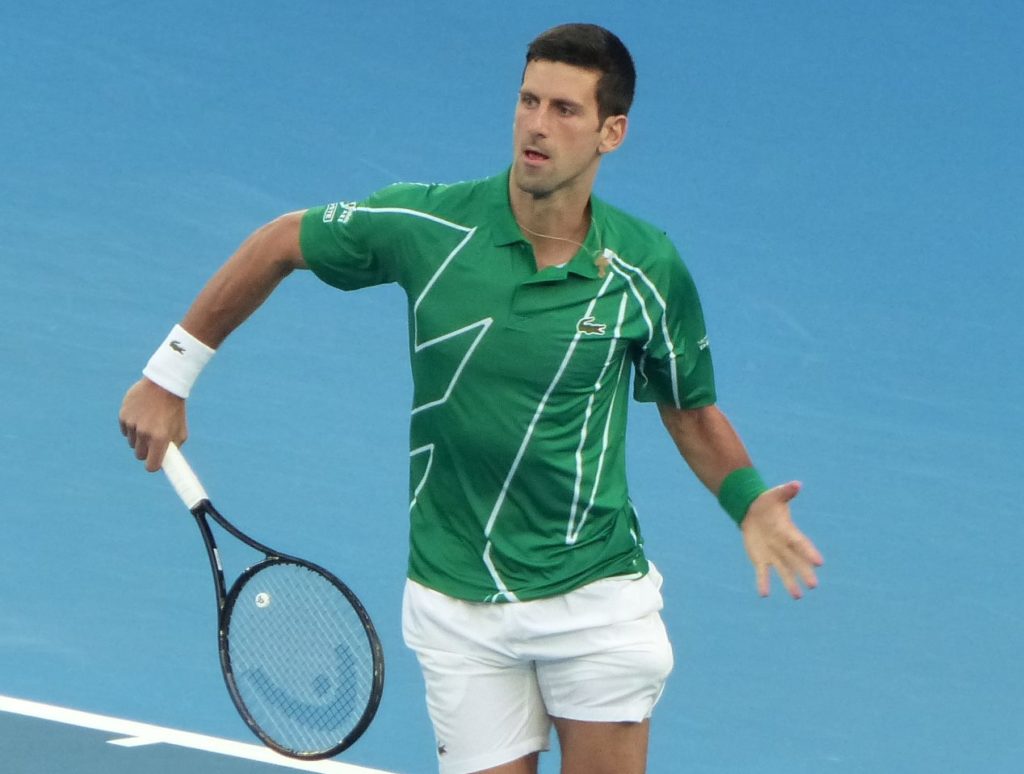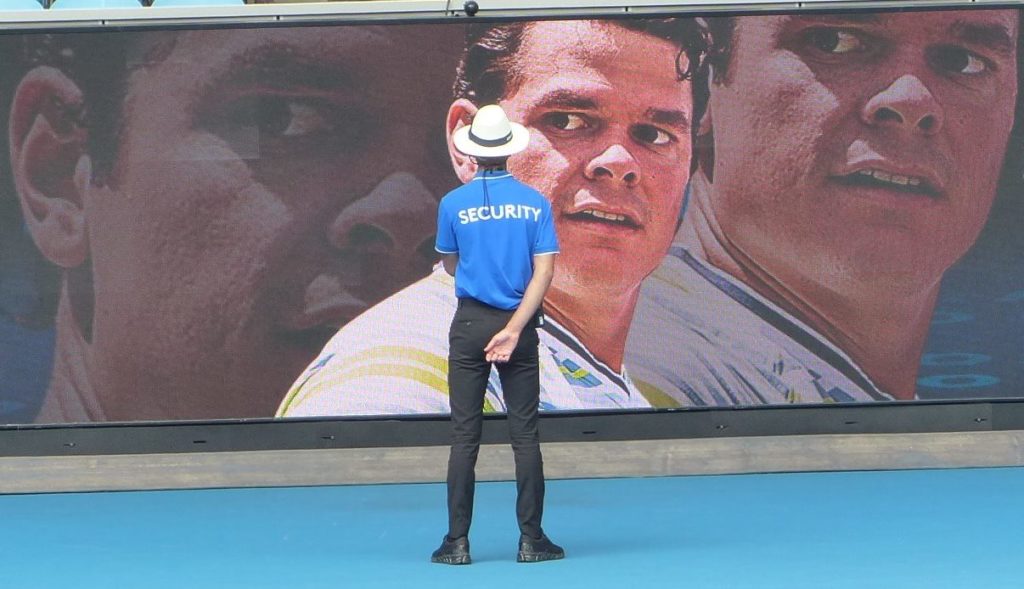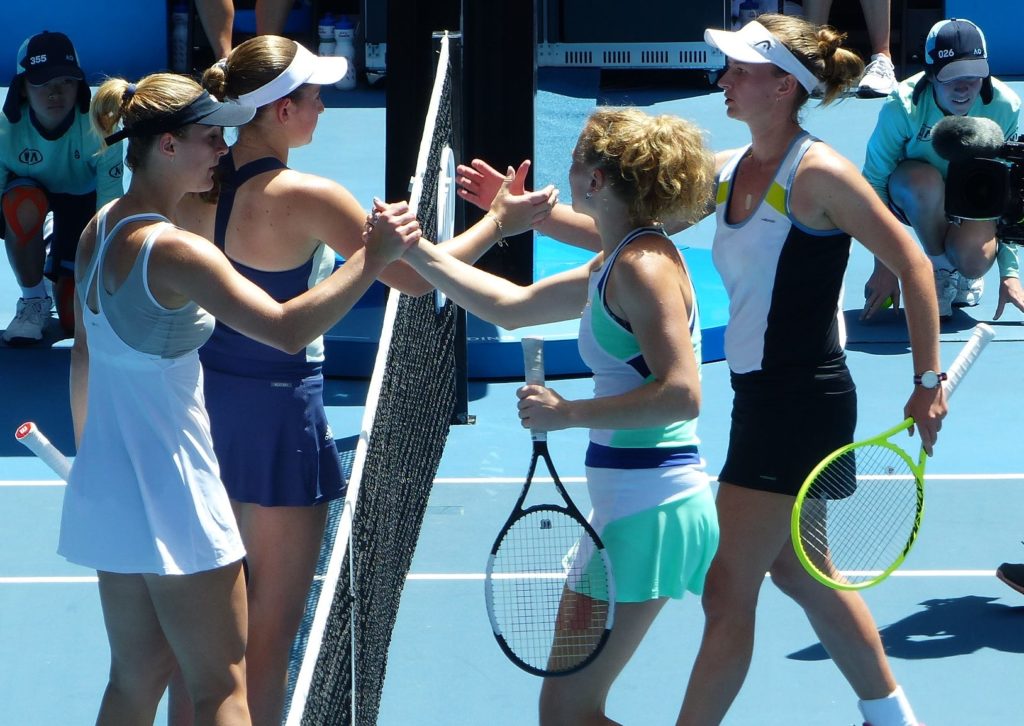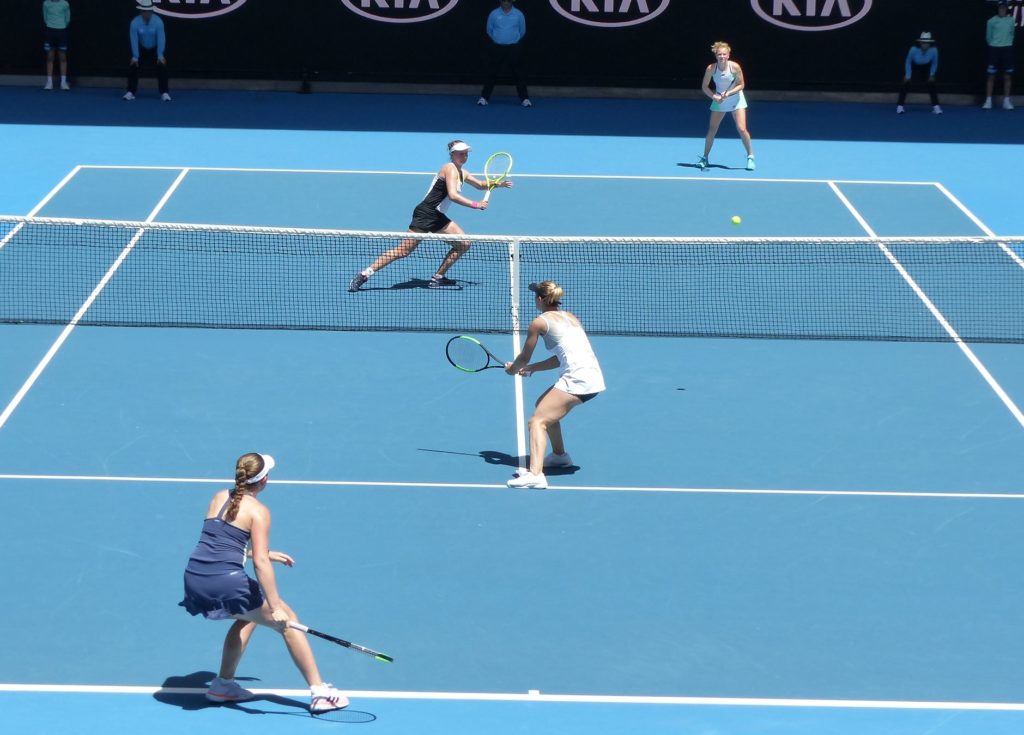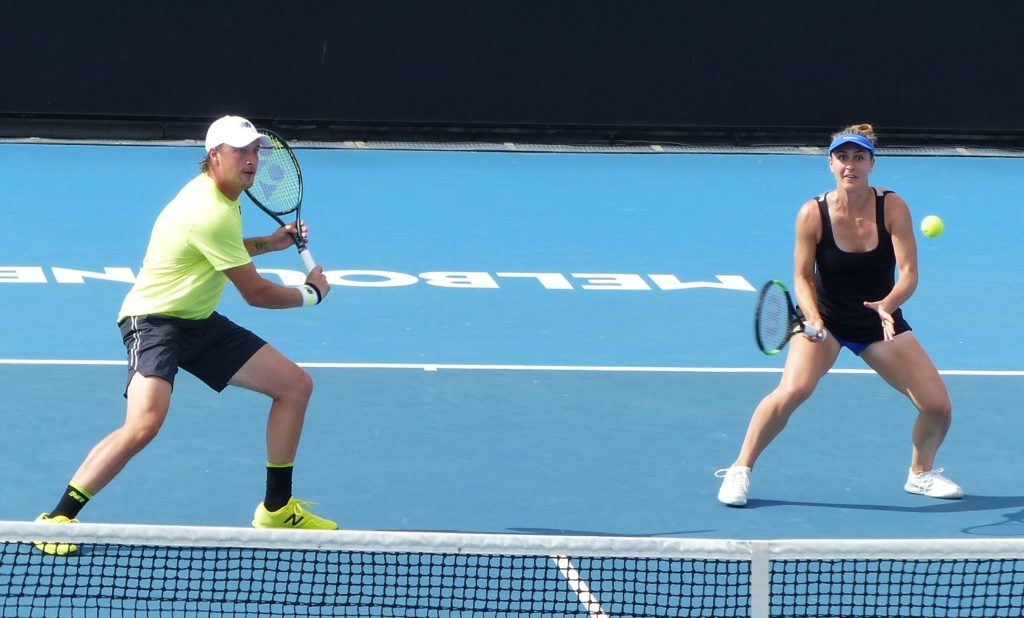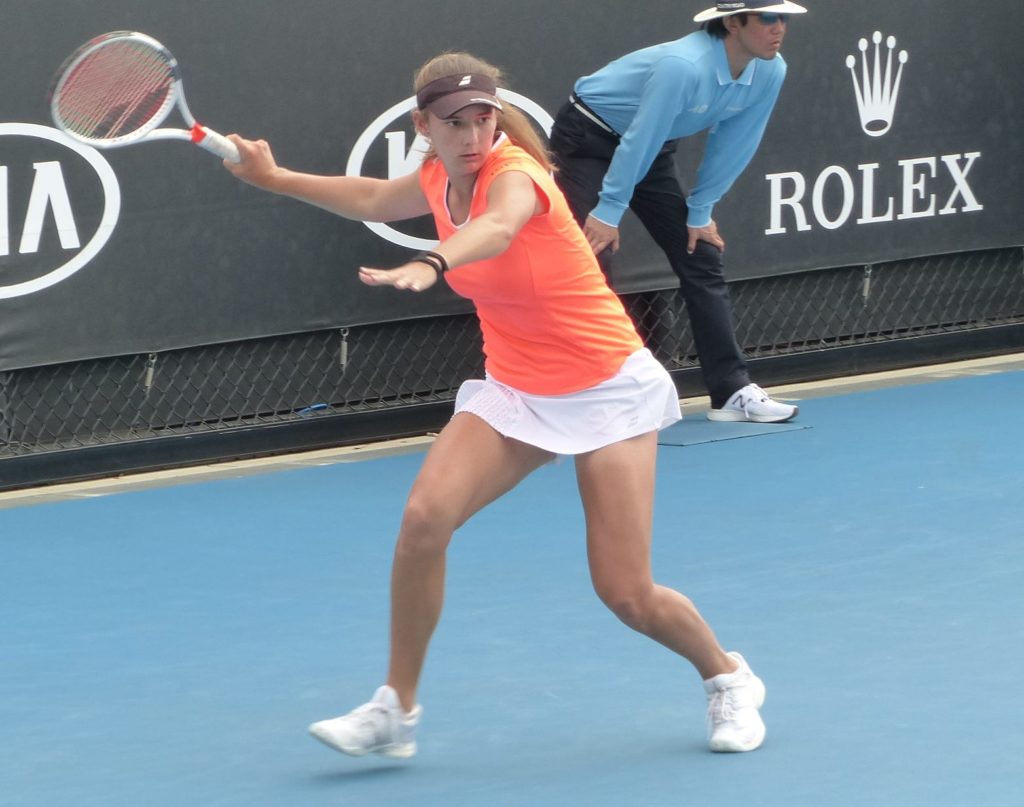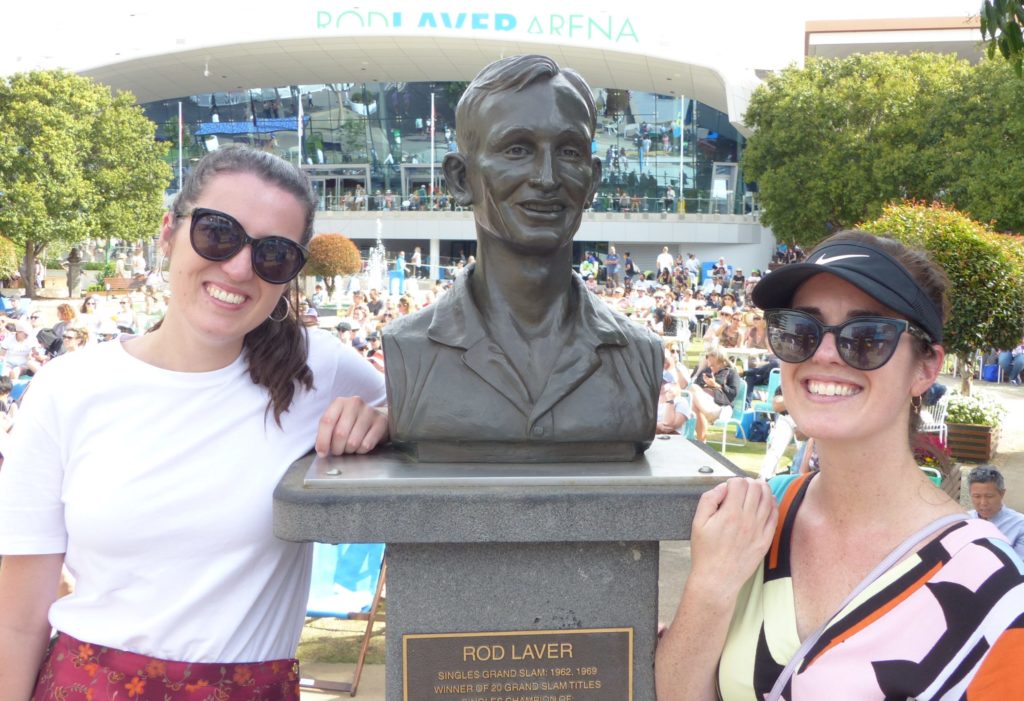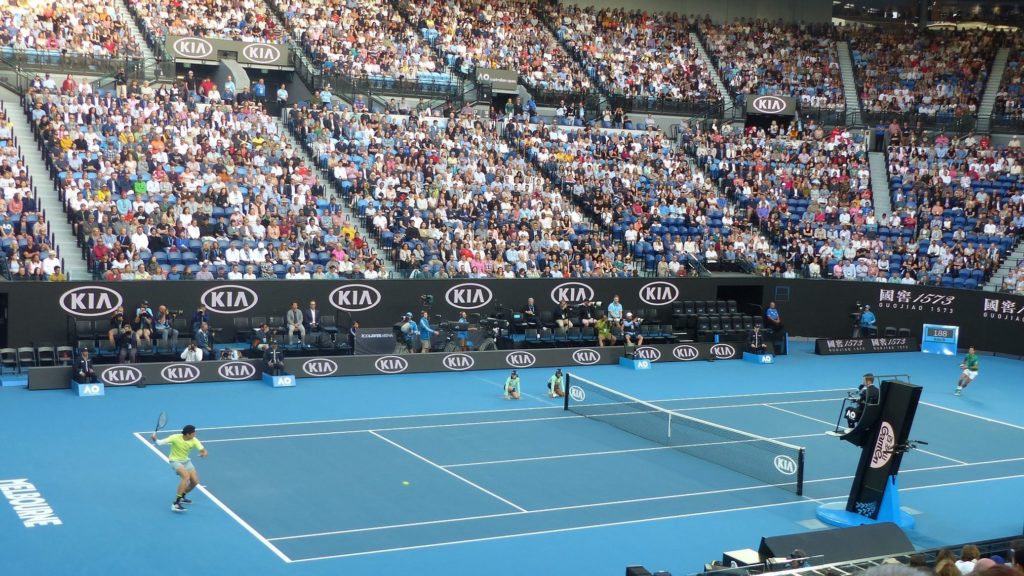
|||||||||
Milos Raonic had shown exceptional form in reaching the 2020 Australian Open quarter-finals – including holding serve 59 times in his previous four straight-set victories. The fact that he was beaten 6-4, 6-3, 7-6(1) by Novak Djokovic, the game’s best service returner, on Tuesday night in Rod Laver Arena was no great surprise. And there was no shame in it because Djokovic only managed to break serve twice, converting on a meagre two of 16 chances.
In the first set Raonic saved eight break points and prolonged the suspense mainly with good serving and aggressive play. But that was risky business against Djokovic who converted on 49 per cent of his break opportunities during the 2019 season. He finally broke through in the 10th game on his ninth break point when he got into a rally by returning a second serve and then won it when Raonic missed long with a forehand.
It took 55 minutes for Djokovic to take the lead and much less than that for him to secure his only other break – to 3-1 in the second set with a crisp forehand cross-court passing shot winner off a Raonic volley on his third break point of the game.
The third set was decided in a tiebreak – and that was probably decided on the very first point when Raonic misfired a forehand into the net. Djokovic was soon up 3-0 and lost just one point the rest of the way as he elevated his game to truly Djokovician levels of excellence.
Raonic’s two break opportunities came in the seventh game of the opening set when he erred with a backhand service return into the net and in the second game of the third set when he netted a forehand return.
The match took an odd turn late – right after Djokovic leveled at 4-all in the third set. He was having some problems with his vision and got a new pair of contact lenses from his camp. He left the court to put them on and Raonic questioned umpire Jaume Campistol of Spain about the legality of him doing that, asking “couldn’t he wait until the end of the set. I could tell you that I have contacts and leave the court.”
But basically the exit could be considered similar to a bathroom break and, upon his return, Djokovic apologized to Raonic with a gesture.
“I want to apologise to Milos once again,” he repeated in his on-court post-match interview. “It was not something that you see often – because it wasn’t a change-over. It was not intentional or tactical. It was just something that I had to do. Those few games I couldn’t see much and I really had to change my lenses.”
All of Djokovic’s numbers are pretty amazing these days, including that he has now won 16 of his last 17 tiebreaks, including those three in last year’s Wimbledon against Roger Federer.
The numbers that stand out from Tuesday’s two-hour and 53-minute encounter are the two players winners to unforced errors ratio – Raonic was a flashier 48/48 while Djokovic was 29/14. Similarly at the net Raonic was 19/39 while Djokovic – quality over quantity – was 10/11.
“The conditions were tough,” Raonic summed up about the match. “It was one of the first times I think that I’ve played here, definitely this tournament, when it’s this cold (about 18 degrees) in the evening. So it made it a little bit slower. I knew that was going to be a challenge.
“But I just tried to make the best of it. He was just too good.”
Raonic made a revealing remark about his approach to the match saying, “I think I came in with sort of the wrong game plan. I think I needed to mix up speeds a little bit more. I was trying to play through him a little bit too much at the beginning.
“Him – and all the other top guys as well – once they sort of can get into a groove, get their balance behind them, things get more difficult. He (Djokovic) was in a lot of my service games. I was sort of holding on. But eventually at one point he found an opening.”
Raonic won only 43 per cent of second-serve points. “You feel it not because it comes back necessarily quicker,” he said about Djokovic’s extraordinary ability to return serve, “but the fact is that he gets his racquet on a lot of returns. He just makes you play more and more.
“Obviously on the second-serve return, he does have a much better return than most of the rest of the tour. But on the first serve, you feel it because he just gets his hand on it. Even if it’s a crappy ball in the middle of the court, you still have to hit another one. You know he can defend really well. That weighs on you over time.”
Djokovic’s brilliance is widely appreciated in the sport, but even the best can improve and his serve has increasingly become a bedrock of his game. Although Raonic had 18 aces to four for Djokovic, the 32-year-old Serb was better than Raonic in three main phases of serving – he his first-serve percentage was 69 per cent to 63 for Raonic, he won 86 per cent of first-serve points to 72 for Raonic and 48 per cent of his second serves to 43 for Raonic.
“I feel that my serve this year so far in ATP Cup and also the Australian Open has been terrific,” Djokovic said. “It allowed me to win a lot of free points.
“When I’m serving well and getting a high percentage of first serves in, it allows me to feel more comfortable, more confident, kind of step in and play at the higher level of tennis.
“We worked a lot in the off-season on my serve. I’m feeling great. I have a great rhythm.”
As much as the loss hurts, Raonic has played five matches in nine days and appears to have emerged fit and with no physical issues. The 2019 season was a nightmare for him with a series of injuries varying from lower back to knee, glute to groin. He played only 36 matches, which was way down from his career highs of 69 matches in both 2016 and 2014.
“I’ve been training a different way,” he said. “Hopefully that gives me the freedom to play and I can be playing week after week, finishing tournaments healthy – then not think about much more than getting to the next one and preparing as best as I can for it.”
His next scheduled event is the New York Open – he spends a lot of time in The Big Apple these days – beginning February 10th to be followed the next week by another ATP 250, the Delray Beach Open in Florida.
With Djokovic now facing a Roger Federer possibly diminished by a groin injury in Thursday’s semi-final, it will be interesting to see if the great Swiss can have as competitive a scoreline as Raonic did against the world No. 2 on Tuesday night.
CZECHS OUST DABROWSKI/OSTAPENKO
The Czech duo of Barbora Krejcikova and Katerina Siniakova defeated Gabriela Dabrowski and Jelena Ostapenko 3-6, 6-2, 6-3 in the Australian Open doubles quarter-finals on Tuesday.
It came down to a decisive third set and the teams exchanged breaks early as first Siniakova and then Dabrowski were broken while serving into the sun.
The final break came when Dabrowski served trailing 4-3. Krejcikova then served out the one-hour and 50-minute match.
Unlike Dabrowski and Ostapenko’s previous round against Hayley Carter of the U.S. and Luisa Stefani of Brazil, the points in Margaret Court Arena on Tuesday were rarely played at the net. Mostly it was backcourt rallying that often involved Siniakova and Ostapenko hitting cross-court to each other.
Dabrowski was easily the best volleyer on the court, and the one with the best sense for poaching. As for Ostapenko, there were remarkable highs from the Latvian followed by too many lows – a.k.a. elementary unforced errors.
The fourth-seeded Krejcikova and Siniakova will now play top seeds Su-Wei Hsieh of Taipei and Barbora Strycova in the semi-finals.
In her later mixed doubles match in 1573 Arena, Dabrowski and Henri Kontinen of Finland defeated Australians Jessica Moore and Matthew Ebden 7-5, 7-6(5). Seeded No. 3, Dabrowski and Kontinen will next play No. 6 seeds Latisha Chan of Taipei and Ivan Dodig of Croatia in the quarter-finals on Thursday.
COLLARD OUT IN JUNIORS
Mélodie Collard was beaten on Monday in the second round of the Australian Open junior girls event. The 16-year-old from Gatineau, Que., lost to Aubane Droguet, 17, of France 4-6, 7-6(5), 6-3.
It was one of those matches where the stats don’t always tell the story – with Collard ending up with 108 points to 107 for Droguet in the one hour and 56-minute contest.
Collard’s winners to unforced errors ratio was 47/36 while Droguet was 36/31.
AUSSIE POST CARD
Busts of all the great Australian players of the past surround Garden Square outside the aptly named Rod Laver Arena. Some are of dubious quality but this one of Laver himself is one of the better ones, as these two young women got a chance to see up close.
